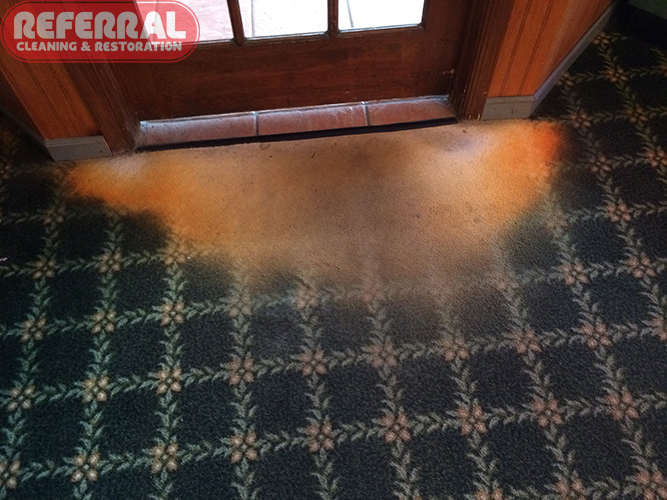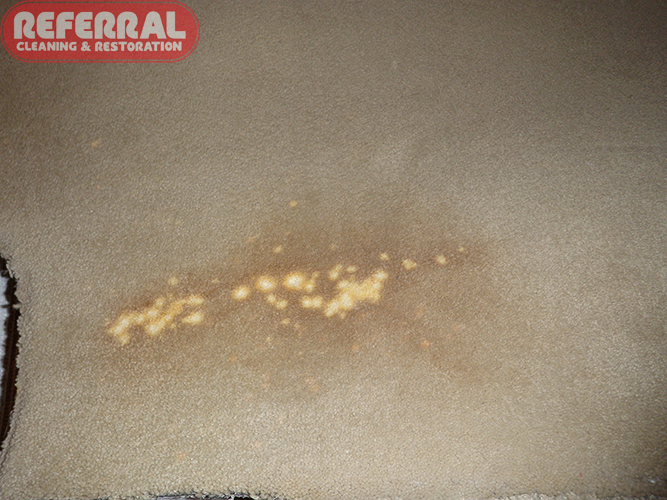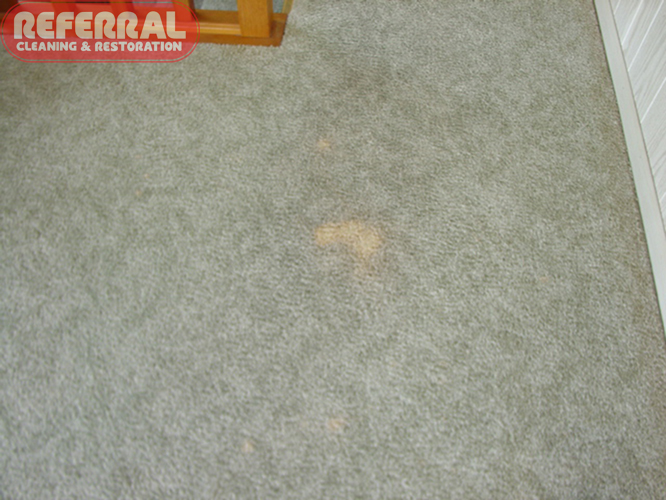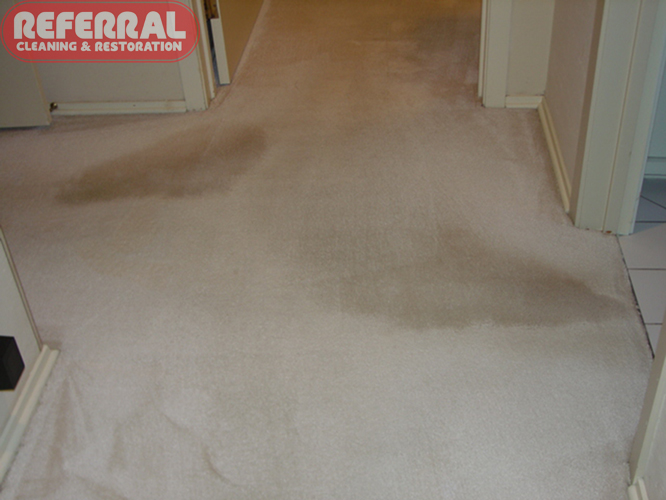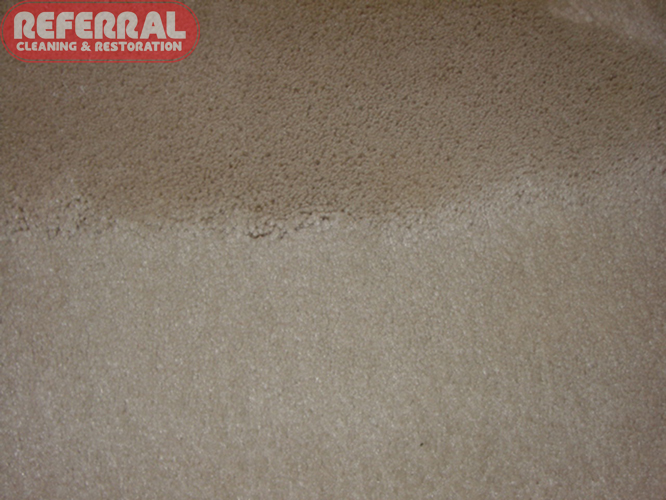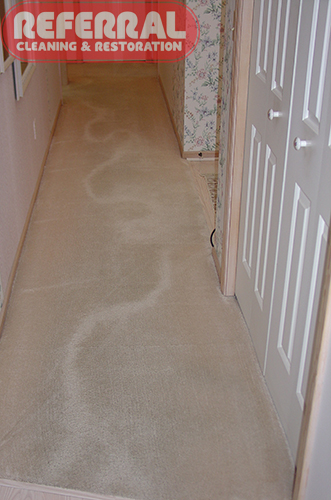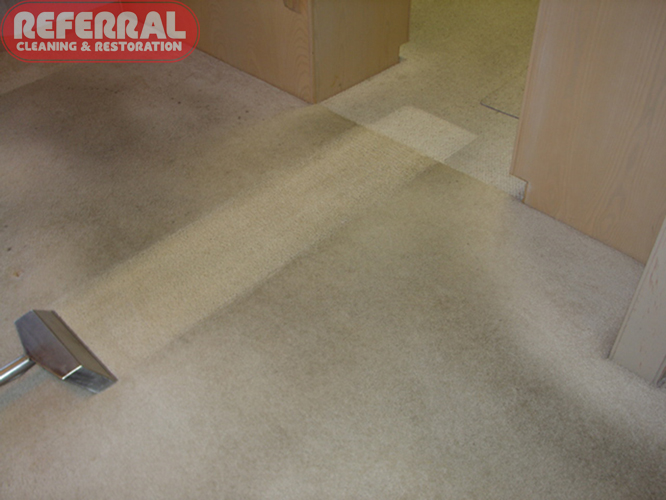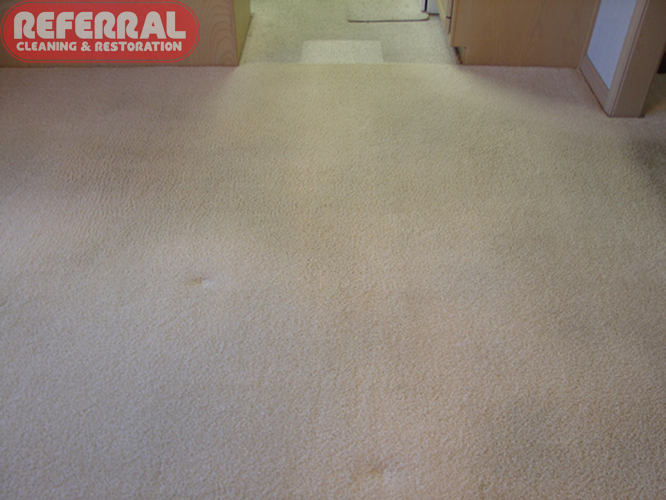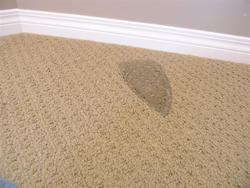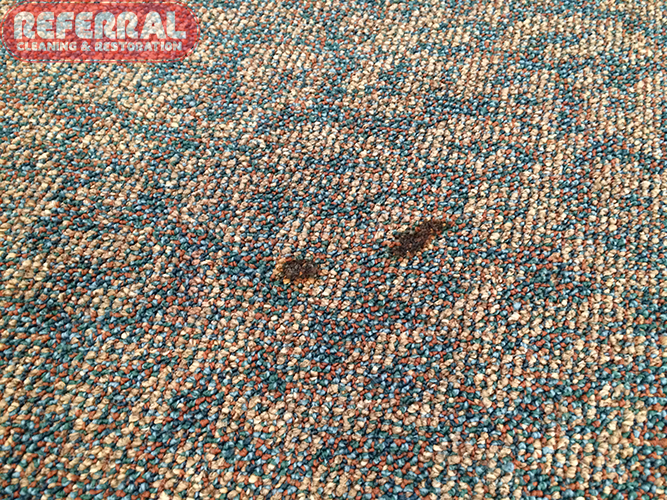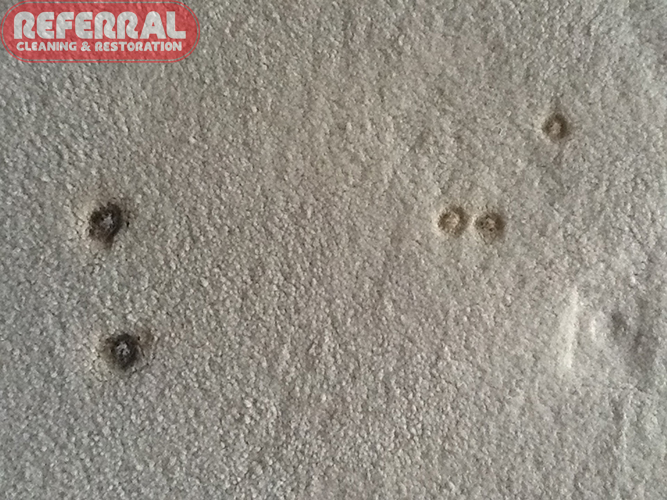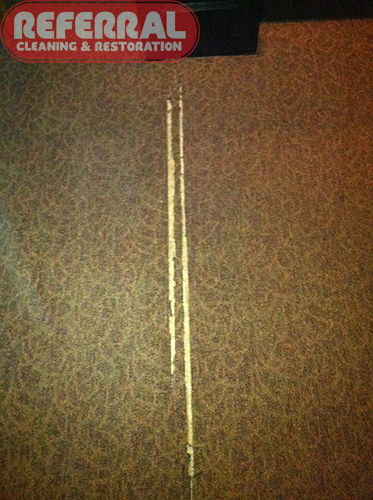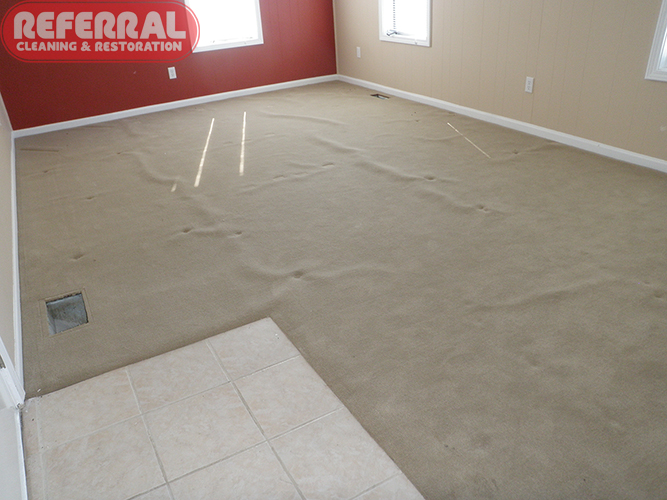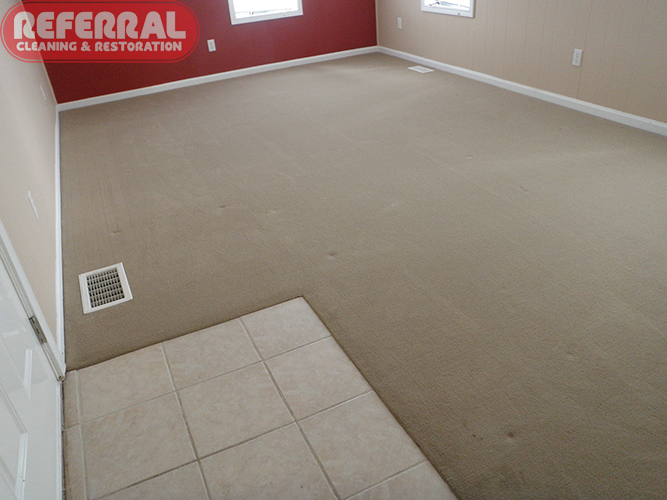Conditions Beyond Cleaning
Below are conditions with carpet that can not be changed or corrected by cleaning. Many will require a repair by a carpet installer, color corrections or replacement of the entire carpet.
Color Loss – Bleach Spots
Some chemicals can cause permanent color loss from carpet/fabric. Some causes are bleach, toilet bowl cleaner, carpet spotters such with a high PH (Use Spot Out to safely clean spots) and acne medication. Nylon and natural fibers such as wool and cotton are will bleach easier. Fibers like olefin and polyester are less absorbent and may not be bleached.
Fading
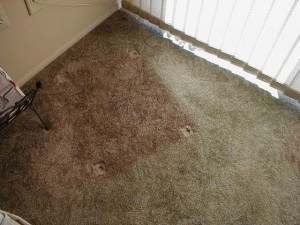 Some carpets fade from direct sunlight. To prevent this have your windows tinted, use blinds or ensure your carpet is protected from fading.
Some carpets fade from direct sunlight. To prevent this have your windows tinted, use blinds or ensure your carpet is protected from fading.
Pooling – Shading – Watermarking – Pile Reversal
The pile of some carpet fibers, in particular polyester and sometimes wool, can reverse creating a permanent change in the carpet’s appearance caused by the difference in the way light reflects off the sides and tip of a fiber as the pile lays in different directions. Shaded areas appear light from one direction and dark from
another direction. Click here to learn more from a CRI Technical Bulletin
Worn Traffic Patterns
Over time a carpet may develop worn traffic areas that are not removed by cleaning. If a carpet is not regularly or properly maintained soil can permanently abrade the carpet fibers causing a difference in the way light reflects off the fibers results in worn traffic patterns.
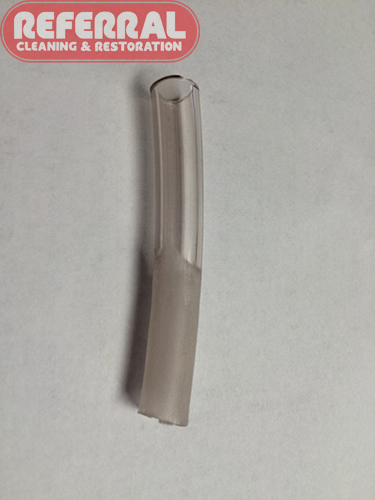
Synthetic carpet fibers are basically made out of plastic. Dirt, dust and soil when examined under a microscope look like shards of broken glass. When plastic surfaces are new they are smooth and shiny, but when they are scratched and abraded it appears dull, faded and unsightly. You can see this in the photo of a plastic tube, one end was scratched and abraded, the entire tube was cleaned, yet you can see the difference in appearance. To prevent worn traffic patterns on your carpet regularly clean and reapply carpet protector.
Learn other carpet care tips here.
Burn Marks / Melted
Carpet can be melted / burned by high heat. Common sources of high heat that damage carpet include a hot iron, sparks from a fireplace, cigarette burns, and friction from dragging furniture across the floor. Olefin has a low melting point and is much more likely to melt/burn than other fibers.
Loose Yarns / Bad Seams
If a seam is loose a carpet installer may be able to fix it depending on the severity. As time passes, loose fibers can be caught by a vacuum, or a pet and pulled so far that it may not be able to be repaired and may need patched.
Frayed / Loose Edge
 Over time the edge of a carpet could become loose or begin to fray. If addressed early on, it may be able to be repaired/stretched. However if to much time passes and the damage is severe it may need patched or replaced.
Over time the edge of a carpet could become loose or begin to fray. If addressed early on, it may be able to be repaired/stretched. However if to much time passes and the damage is severe it may need patched or replaced.
Optical Brighteners
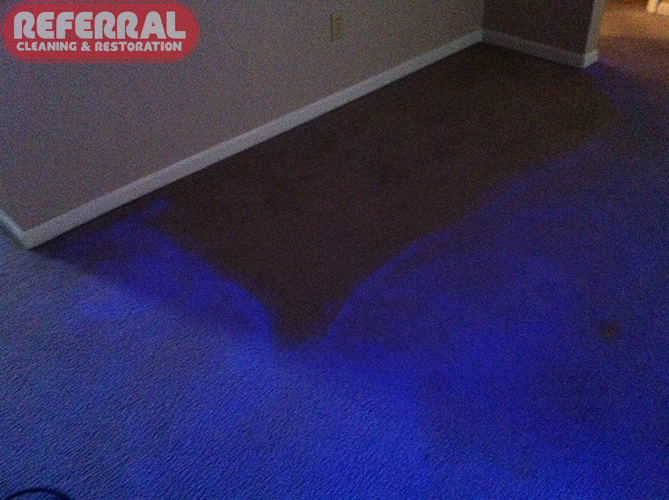 Optical brighteners are highly specialized dyes which absorb invisible ultraviolet light and re-emit it as visible light, making the carpet appear brighter than it really is. They are used by some carpet cleaning chemical manufacturers who don’t realize that their use can permanently cause the carpet to turn yellow. Since these are dyes, there is no cure for this problem. Optical brighteners are frequently found in carpet shampoos and bonnet cleaning compounds. Carpet manufacturers don’t approve of carpet cleaning chemicals containing optical brighteners.
Optical brighteners are highly specialized dyes which absorb invisible ultraviolet light and re-emit it as visible light, making the carpet appear brighter than it really is. They are used by some carpet cleaning chemical manufacturers who don’t realize that their use can permanently cause the carpet to turn yellow. Since these are dyes, there is no cure for this problem. Optical brighteners are frequently found in carpet shampoos and bonnet cleaning compounds. Carpet manufacturers don’t approve of carpet cleaning chemicals containing optical brighteners.
Optical Brighteners are visible when using a black light. Notice in this photo the dark area where a sofa used to sit and all around it the carpet is glowing from the products a homeowner used to clean it themselves.
Side Match
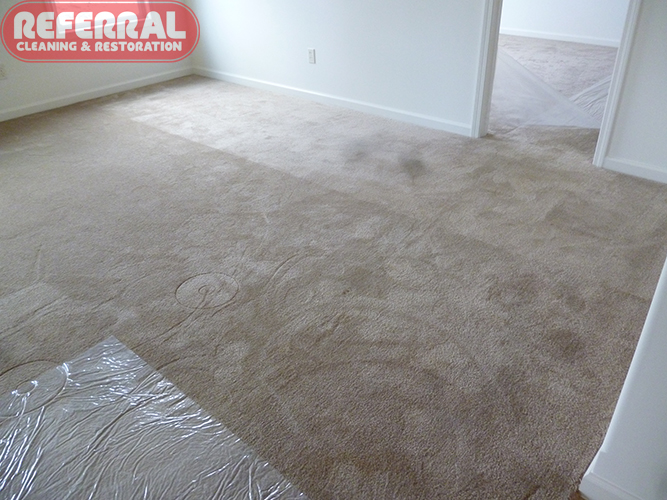 Carpet pile lays in one direction. When carpet is installed the installer must ensure as the carpet is laid out it is all facing the same direction. If the carpet is reversed a side match problem occurs.
Carpet pile lays in one direction. When carpet is installed the installer must ensure as the carpet is laid out it is all facing the same direction. If the carpet is reversed a side match problem occurs.
Yellowing
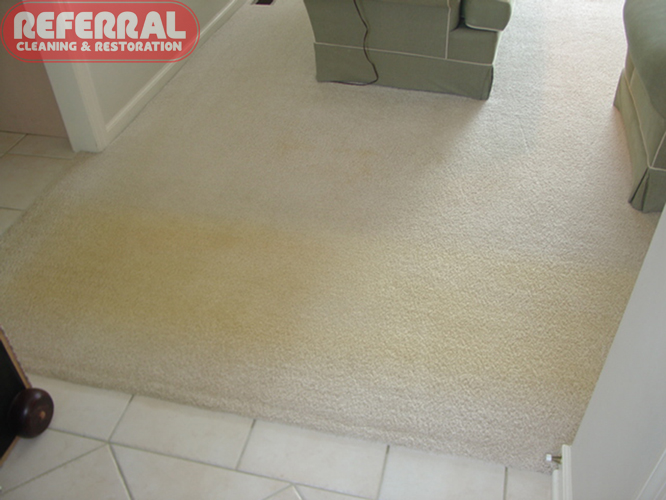 BHT Yellowing (Butylated Hydroxy Toluene) is a common slowly vaporizing preservative used in many plastics including rebond pad. Most of the problems have been on carpets in areas of low air circulation such as in closets, under low-lying furniture, or under throw rugs (especially if there is a rubber backing on the rug)
BHT Yellowing (Butylated Hydroxy Toluene) is a common slowly vaporizing preservative used in many plastics including rebond pad. Most of the problems have been on carpets in areas of low air circulation such as in closets, under low-lying furniture, or under throw rugs (especially if there is a rubber backing on the rug)
Notice in this photo the carpet is yellow where a rug used to lay on top of the carpet.
Delamination
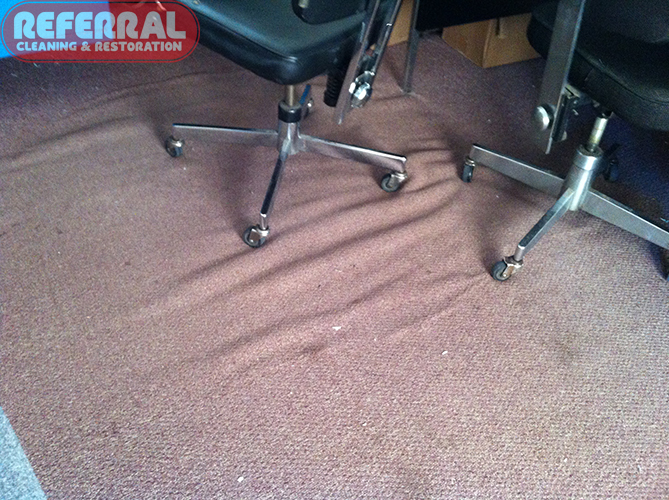 Delamination is the separation of the secondary backing from the primary backing of the carpet, causing an installed carpet to wrinkle or pucker. A common cause can be a lack of a chair mat when chairs with wheels are used directly on carpet as seen in this photo.
Delamination is the separation of the secondary backing from the primary backing of the carpet, causing an installed carpet to wrinkle or pucker. A common cause can be a lack of a chair mat when chairs with wheels are used directly on carpet as seen in this photo.
Wrinkles/Buckles/ Bubbles/Ripples
Carpet wrinkles can be unsightly, create trip hazards, accelerate carpet wear, and cause the carpet to delaminate. Proper installation techniques greatly reduce the potential for wrinkling. After cleaning carpet may wrinkle and buckle because of the change in humidity, however, it will typically return to its original position upon drying. If this happens it is not caused by a mistake in cleaning but rather indicates that the carpet needs restreched. Click here to learn from the CRI steps that can be taken during installation to prevent carpet from becoming loose.
